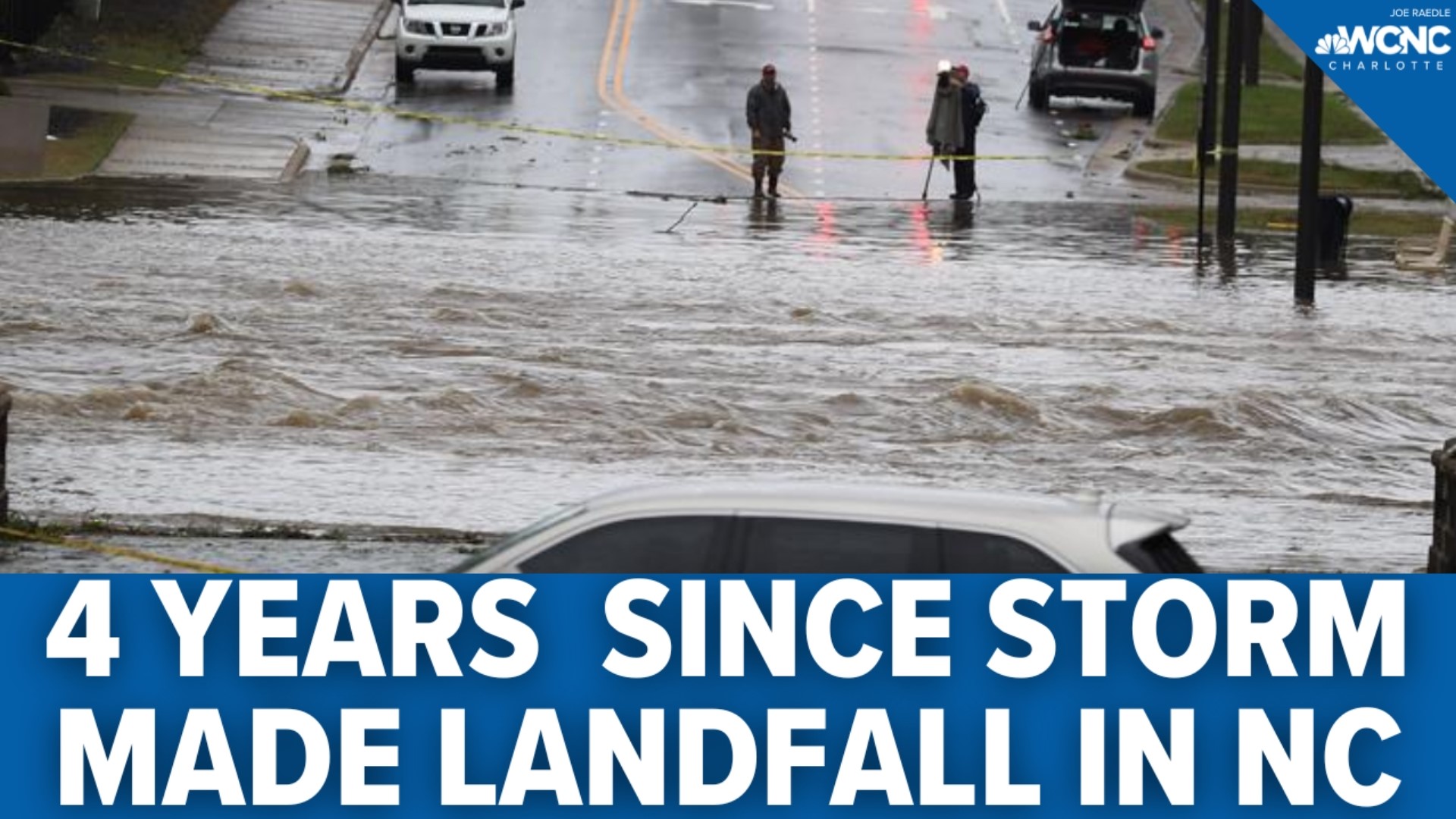CHARLOTTE, N.C. — Four years ago Wednesday, the Carolinas took on devastating flooding from Hurricane Florence.
Hurricane Florence is now in the history books. Unlike other hurricanes, Florence is remembered not for its Saffir-Simpson category strength but instead for the catastrophic flooding it caused across both South Carolina and North Carolina.
On August 30, 2018, Florence emerged as a tropical wave off the coast of Africa. The storm intensified as it approached the east coast of the United States.
Just before making landfall, Florence positioned itself directly off the Carolina coast as a Category 4 hurricane. Officials prompted evacuations along the Carolinas coast.
It made landfall as a strong Category 1 on September 14, 2018. The once major hurricane with maximum sustained winds of 130 mph had succumbed to unfavorable environmental conditions causing it to weaken.
The slow-moving storm snaked its way through South Carolina and traveled hundreds of miles over land dumping heavy rain.
Significant flooding and widespread power outages remained after the storm. Florence dumped a record 35.93 inches of rain in Elizabethtown, North Carolina. Across Charlotte, upwards of 10 inches of rain fell.
🌩️ If you like weather, watch Brad Panovich and the WCNC Charlotte Weather Team on their YouTube channel, Weather IQ. 🎥
More than 2,000 primary and secondary roads were closed due to the flooding including Interstate 95 and Interstate 40.
Freshwater flooding caused by Florence ravaged homes, countless people were rescued from rising flood waters, and more than 50 people were killed as a result of the tropical system.
Click here to sign up for the daily Wake Up Charlotte newsletter
Florence caused an estimated $30 billion dollars of damage making it the costliest hurricane to hit the Carolinas.
WCNC+ will stream an archival newscast covering Hurricane Florence at 6:30 p.m. Wednesday. Stream WCNC+ for free on wcnc.com, the WCNC mobile app, Roku, and Amazon Fire.

